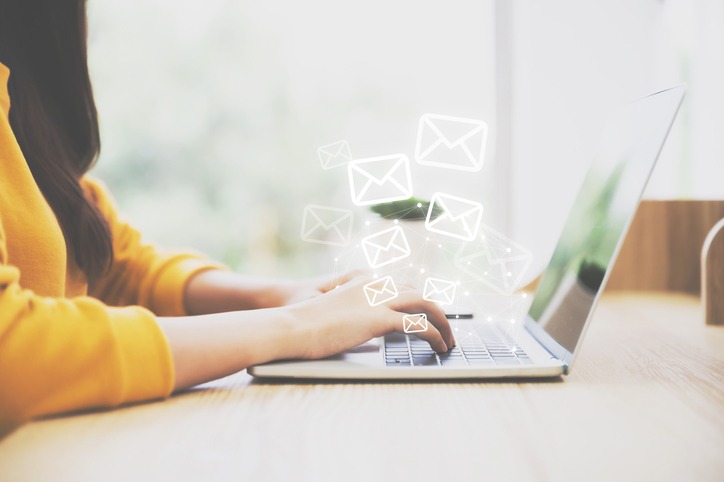
Prevent your inbox from becoming another full-time job – use these tricks and tips to keep the chaos at bay and, instead, adopt healthy email management practice
CREDIT: This is an edited version of an article that originally appeared on Business News Daily
Email is often the primary mode of business communication, and with good reason; it can be a quick and effective way to complete tasks such as scheduling and providing status updates to your team. However, if you don’t follow healthy email management practice, it can seem like your inbox is the one managing you.
While email is a great form of communication, it shouldn’t be all-consuming. Here’s how to break unhelpful habits and create a healthier, more efficient, relationship with email.
Develop an email schedule
Many people consider achieving inbox zero to be the ultimate email management success; the goal becomes to keep your inbox clean at all times and regularly check for new emails – but while checking your email may feel productive, it can actually take time and focus away from other, more important, work tasks. If you want to reduce workplace distractions, and become more productive, ditch this concept and create a schedule to limit the time spent reading and responding to emails. This will minimise the interruptions that derail your productivity on important tasks and ensure that you are setting aside adequate time for them.
There is no rule for what type of schedule works best; if you aren’t sure how often you need to check your inbox, try looking at it at three designated times each day for a week or other fixed amount of time. Reduce this time the following week until you find the minimum amount of time you need to adequately respond.
Managing expectations and creating boundaries are important aspects of creating an email schedule. Make sure clients and co-workers are aware of the new schedule by setting up an automatic response with your email host or adding your email response times to your signature. This way, people who are accustomed to instant replies won’t be surprised or offended if you take three hours to respond instead of three minutes.
Organise content in folders
We often rely on email for important work history information but, with the number of emails most of us receive daily, finding a message you need can feel like searching for a needle in a haystack. Among the respondents in a Mail Manager survey, 73% said they spent too much time searching for emails – so it’s no wonder that 70% of the same group felt email was a large drain on overall productivity.
One of the easiest ways to save yourself a headache is to develop a robust email organisation system. Create folders for timely emails or informative messages to keep your inbox clean and manageable. If you work for a company that has several departments, it might be beneficial to organise your account by department, with subfolders for time-sensitive material. You can also create folders for recurring projects or events.
Unsubscribe from email chains
An integral part of the email organisation process is the magic of the unsubscribe link. It’s easy to become inundated with offers from companies and vendors by signing up for their lead magnets but if their subsequent correspondence only adds to your email backlog, it might be time to unsubscribe. Be ruthless with this; marketers know they need to earn subscribers’ attention, and your subscription is a privilege.
If creating an email schedule and implementing a strict organisation policy doesn’t make your inbox more manageable, it may be time to consider an email management tool. Some apps allow you to mass unsubscribe from newsletters and other things that are clogging up your inbox.
Pre-schedule messages when appropriate
Schedule-sending features can make email management easier both for you and the people who receive your messages. For instance, let’s say you’ve got a big client meeting coming up; you can draft and schedule your follow-up email ahead of time so that you don’t have to worry about remembering to send your presentation afterwards.
Or you might have an important email you want to get off your desk, but you didn’t draft it until end-of-day Friday. You can schedule it to hit your co-workers’ inboxes first thing on Monday so that you all can enjoy the weekend. Email scheduling can show that you respect your colleagues’ time as much as your own.
Clear the clutter
Past emails can be helpful when you want to retrace your steps in a conversation, but you don’t need to keep every little message. Yes, conversations about action items will help down the line but an email confirming that the team meeting was moved from 2:30 to 3:00 p.m – maybe not as important. Regularly delete the emails you don’t need to keep so it’s easier to search your inbox when you need something important.
Set email reminders
One of the reasons people read emails as soon as they receive them is to avoid accidentally forgetting about them later. Let your email platform do the work of remembering for you so that you can focus on your highest priorities.
Some platforms will allow you to mark and set timed reminders for specific messages. If you can sync your calendar with your email platform, you may also be able to create an event from an email. This can be especially helpful if your response requires some extra thought and you need to block time on your calendar to address it.
Turn off notifications
If you’re working on a task, and in a state of flow, the last thing you want is to be interrupted. When you’re inundated with pinging sounds and pop-up notifications every time you get a new email, maintaining focus can be an uphill battle. Disabling notifications can help you stick to your designated email-checking schedule and this will also eliminate the temptation to answer emails outside of working hours.


Be the first to comment